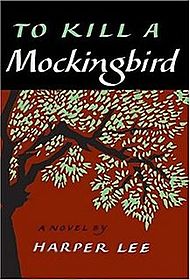"To kill a mockingbird" Part 2: More questions

Ch. 15
1. What is the Ku Klux Klan? What do you think of Atticus' comment about it?
2. How does Jem react when Atticus tells him to go home, and why?
3. What persuades the lynching-party to give up their attempt on Tom's life?
Ch. 16
4. What sort of person is Dolphus Raymond and what is your opinion of him?
5. How does Reverend Sykes help the children see and hear the trial? Is he correct in doing so?
Ch. 17
6. Choose three quotes from chapter 17. Explain the context of each, the characters involved, and their relevance for the story, themes and overall message of the novel.
Answers:
1-It is a group of people who discriminates almost everything that is not part of "the white culture". Atticus mentions that it is noting to worry about, that he doesn't fear about the KKK. Probably he is right, because they wouldn't attack an insignificant case from a town like this, but I do thing that it would be correct to be alert.
2-He doesn't follow this order, because he wants to protect his father from the mob that wants to attempt on Tom's life.
3-Scout, who talked to the father of Walter Cunningham in a very cordial way, eventhough he was there to kill Tom.
4-He is a white men that live with the coloured people, because he thinks that in most of the times, they are better than the white ones. I thing he is a very decided person, that, no matter what people would think about him, he would do what he wants.
5-He led them sit on the black people's balcony. I think it is, because, under my point of view, they have the right of watching his father doing such an honoured act.
6-"every town the size of Maycomb had families like the Ewells". In this quote, Scout is telling us that the Ewells are a very known family in town, also known as white garbage. This because they lived near the town garbage dump, and where very mean persons in general. "Mr Finch know you are here? This ain't fit for Miss Jean Louise or you boys either". This is said by reverend Sykes, as he saw the children in the courtsoom. This shows us that the reverend knew this was going to change the way the kids were used to see things. "Will you write your name and show use please". This is said by Atticus, who gives a clear evidence that was Mr. Ewell the one who hited Mayella and Not Tom.












